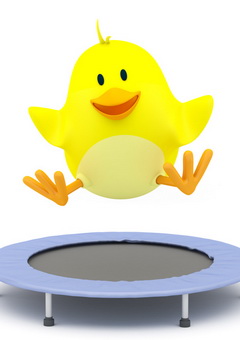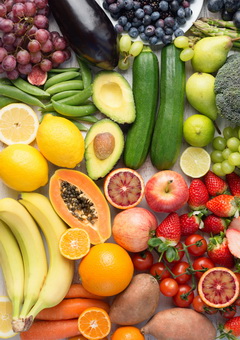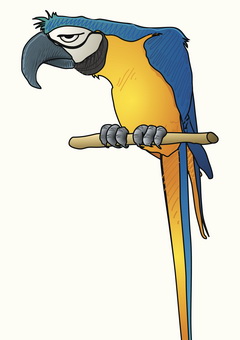wingin' it with birds
Here a bird, there a bird, everywhere a bird bird.
Hi there! I'm a bird. I'm not telling you which type of bird because I want you to love me, not classify me, for goodness sake!
Do you have a bird? Well of course you do! You wouldn't be reading this webpage if you didn't, right? Right!
Are you wondering why this page is written in the first-person? And by a BIRD?! And by a bird who appears to have extraordinary writing skills??!! Well, just get over yourself and keeping reading.
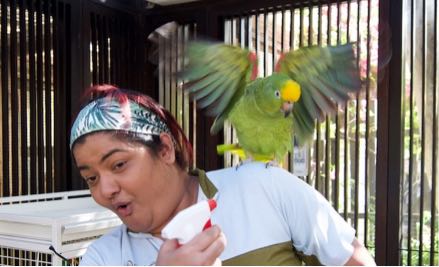
This page is not about every possible type of bird (it's just one webpage, after all) but it is about the most common types of bird we see in our clinic, and I thought (and my human bosses agreed) that it might be helpful to give you some unsolicited information about What Women Want (oops!) what birds want. You see, us birds know you love us, but we do wonder sometimes if you know HOW to love us. So I thought I'd give you a bit of help on the way to ever-lasting relationshipping.
(Have I hooked you? Are you going to keep reading? Ever see a hard-working bird cry?)
So what kind of birds am I going to talk about here? Budgerigars, amazons, macaws, cockatiels, African greys, cockatoos, parakeets and lovebirds (all parrots), and canaries, finches and sparrows. It's possible that other types of bird have the same or similar needs, but you'll have to do your own research for those (and write your own webpage).
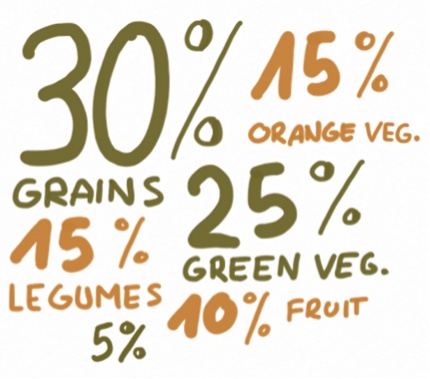
DIET
Parrots need and want a variety of foods. In other words, not just seeds and pellets, but also fruit and veggies too. In fact, as a general guide, their food should generally roughly be 30% grains, 25% green veggies, 15% orange veggies, 15% legumes, 10% fruit, 5% assorted veggies, treats and supplements.
- Good maintenance pellet food is essential. The pellets should be free from artificial colours and flavours, salt, added sugar and, ideally, they should be totally organic. Pellets should include any or all of the following: alfalfa, barley, hulled millet, rice, sunflower seed hulled, sesame seeds unhulled, quinoa whole, pumpkin, buckwheat hulled, dandelion leaf powder, carrot powder, spinach leaf powder, purple dulse, kelp, rose hip powder, rose hip crushed, orange peel powder, lemon peel powder, rosemary whole leaf, cayenne ground, crushed red chili peppers, nettle leaf, dried vegetables and dried fruit.
- Seeds and nuts can be sunflower, safflower and pumpkin seeds, and almonds, walnuts, brazil nuts, hazel nuts and pine nuts. Most seeds and nuts are high-fat which can cause liver disease in my feathery friends, so don't let them overindulge! Also, sunflower seeds can be addictive, literally, so be careful with those too! (You can read more about this on the World Wingin' It Web.) The best thing is to use seeds and nuts as a treat or a training aid, because we DO wuv 'em.
- Fresh fruits are awesomeness but they should be fed sparingly because of their high sugar content and can cause diarrhoea. (Oops! I poopsed!). Apple, pear, melon, mango, papaya, pomegranate, guava, apricot, peach, oranges, grapes and kiwi. Yum! BUT... do NOT feed me avocado! They are toxic to us birdies and can cause liver failure (scary).
- Fresh vegetables are lovely, even if my 4-year-old human siblings say otherwise. Broccoli, wild rocket, Swiss chard, kale, sweet pepper, carrot, beetroot, boiled potato, peas, mung beans, cauliflower, tomato and sweetcorn. Double YUM!
Canaries, finches and sparrows get a life-kick from:
- Seeds! Lots of seeds! Rape seed, millet, canary seed and linseed. Ideally, all organic and free from preservatives and add-ons such as salt and sugar. Booooooo salt and sugar! And be careful to feed us good quality seeds because not-so-good-quality ones can cause fungal infections in us (gross!)
- As for nuts... not advisable because they also cause fungal infections (double gross!!)

Don't hang/put food and water bowls under my perches. You see, when my friends and I... uh... toilet, those droppings will land in the bowls and contaminate things (aaaaahhhhh!!!). Sooooo... make sure those bowls are placed higher than, or level to, the highest perch in our cages. Clever, right? Also, use filtered/bottle water (lead and other contaminants can build up by using tap water), and change my water daily, or indeedy TWICE daily if you're adding veterinary-prescribed supplements!
For parrots, the bowls should be stainless steel or ceramic because they need to withstand the endlessly playful chewing and biting. For smaller birds, the same or plastic ones.
CAGES (and their bits and bobs)
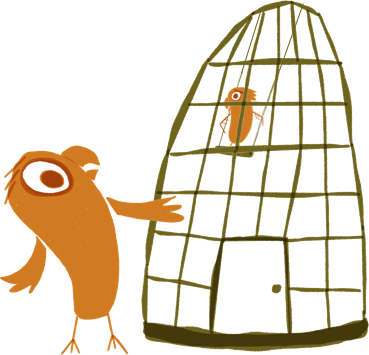
I need room to stretch my wings, to move about, to exercise, to play. PLUS... if I'm a parrot (I'll never tell!), extra room for all my toys! So, please, please PLEASE get me the biggest cage possible, suited for my size!
- Do I need to repeat? THE BIGGEST CAGE POSSIBLE!!! (I'm subtle, aren't I?)
- Avoid cages which are low and wide. Us birds like height! And if you can get high and wide, even better!
- Parrots are strong and playful. So, avoid plastic cages and cages with small doors. Go with stainless steel or a similarly high-quality material, and very sturdy ~ parrots use very strong beaks and talons to manoeuvre around cages, don't ya know. Cages made of plastic, and especially those with plastic coating, can easily be chewed to bits, which not only destroys the cage (eventually, and sometimes pretty quickly!), but can also end up being a choking hazard (you don't want us to choke, do you?). And cages made of poor quality metal can cause zinc toxicity in parrots, so... choose the cage wisely.
- Finches, canaries and sparrows tend to not use their beaks to manoeuvre around, so cages designed for smaller birds will usually be made less strongly and expensively, plating, galvanizing or plastic-coating the steel wire.
Peachy Keen Perches:
- The magic number of perches is three: one sleeping perch (perfectly fitted for maximum comfort ~ more on that below), and two others of varying material and size. With three perches, and all that ample variety (without getting overcrowded), us birdy-birds are happy bunnies! (Well, you know what I mean.)
- Three perches!!?? Where will they go, you ask?! Well, easy! In different areas and at different heights within our cages, of course! Climbing from perch to perch is not only fun but it's great exercise and gets our birdie-feet moving and gripping and stretching and... it's nice to rest our feet in different places and ways... and... uh, no, that's it; but that's pretty good, right? And it doesn't stop there. No sir! You see, a variety of perches and placement of perches helps keep me from getting bored, and it kind-of sort-of makes it feel like being in my natural environment. (Oh the trickery! The duplicity!)
- Where will they go? ~ Part 2: It's not only important that our perches are in different areas and at different heights inside our cages, but also think about this: We need a bit of empty space in the cage so that the perches don't keep us from moving around or causing damage to our feathers as we move around. (Oh man! This is getting complicated!) Try to place the perches so that my tail doesn't touch the side of the cage when I'm perching ("sitting" for you humanoids). (And remember to avoid placing perches directly over my food and water dishes, for goodness sake!)
- What about perch size? A good rule of thumb: our feet are most comfortable when they wrap approximately 75% around our perches, so the perch should be wide enough to grasp easily and strongly but narrow enough that we can get our tootsies and toes almost fully around it... comfortably. My forward-facing toes don't want to overlap my backward-facing toes at all. In fact (too many facts so far?), when I'm comfortably perched on my perch, with my toes fully wrapped around my perch, there should be a little bit of space between my front and back toes. (I'm very scientific, don't you think?) Now, once you have that one perfectly-sized perch for me, the other two (remember, it's best to have three perches) can be, for one of them, slightly larger in diameter (so that my feet and toes reach only about halfway round that perch) and one of them which is slightly smaller (so I can really get a full grasp of it and... drum-roll please... hang upside-down from it (if I'm a parrot, which I'll NEVER TELL!)).
- Natural tree branches, though possibly more difficult to find exactly what you need for me, are really better than the bland, perfectly manufactured (and manicured) wooden perches normally supplied with the cage you might buy me. Why? Well, besides simply being natural and so more like what I naturally prefer, they are also uneven in shape and texture, giving me a more "real world" experience when I'm walking, climbing and sitting on them. With the roughness and different shapes and contours of a tree branch, I naturally get to exercise my feet, toes and general muscles more and differently, which is not only good for me but just feeeeeeeellllllsssss goooooooooood too.
So, not only three perches, and not only different sizes, but also different shapes, textures and contours. Got it? Squawk!

The floor of my cage:
- Believe it or not, I'll try to eat pretty much anything, so don't use sawdust, wood-shavings or bark chips for the floor of my cage because... yes... I might eat them. Not good.
- Newspaper sheets or even shredded newspaper is pretty good, as is kitchen paper towel.
- Do you like cleaning? I gotta tell ya, if you're going to have a bird in your home, you're going to have to start enjoying cleaning. Yes, cleaning. And that means, as a start, you gotta clean my cage floor, water/food bowls, and cage bars on a daily basis PLEASE, especially all my "faecal debris" (otherwise known as sh*t (am I allowed to write that?)).

Where to put my cage?:
- Chest-level height: As I've said, birds like height. And we're kind of inclined to get scared and anxious if we're forced to be too low (and let's face it, if I'm in a cage, I'm not choosing my place or position). Conversely (big word for a bird, right?!), if I'm up too much higher than human eye-level, I might get the idea that I'm superior to you, and if I'm really much higher than that, I might even start feeling isolated from all you lovely people below. All birds, including budgies and love birds, but especially the big birds, love and thrive on the interaction and connectedness you hopefully wanted when you got us, so when we're in our cages, keep us high but not separate. High but not separate. Hmmm... there's some kind of a saying in that, I'm pretty sure.
- Speaking of interaction and connectedness, height's not the only thing! (Surprised?) Keep my cage in a place where I'll feel, and be, part of things in your home... part of the activity and community. I might be a bird but I ain't bird-brained, after all! I want to have interaction with you, be connected, be able to frequently see and interact with what's going on around me and with all our family. Most of us birds love attention and we can get pretty bored and lonely if we're too much out of the fray of things, like in an empty, unused room (ouch! terrible!). That said (ready for it?), don’t put my cage in a place with too much high-traffic and activity either; though we love interaction and attention, too much noise and commotion can get us a little anxious, even to the extent of possible health problems. Balance, my friend. The correct branch to take is the branch of balance. (Ohhhhhhmmmmm...)
- (By the way, parrots get attached to their humans. And it's actually possible that we get so attached to just one person, we don't get too attached to anyone else! Sooooo... it's really best to do your best to get everyone in the family involved with us, developing independent and good relationships with at least a few people. Give it a try!)
- As you read all this, are you feeling backed up against a wall? Well, we birds love walls! Or at least one wall, with our cages up against it. That's right, put our cages up against or near a wall! You see, if my cage is in the centre of a room or far from any walls or solid partitions, I'll probably feel anxious and scared because I'll feel like I have nowhere to hide from danger; us birds need at least one side of our cages up against or near a wall for the sense of security it gives us (no one behind MY back, buddy!). And if possible, the ideal place for my cage is in a corner where I'll have two walls to "got my back". Now, it might go without saying, but given that I like you to "have my back", as they say, also don't put my cage directly in front of a window because such things as dogs, cats, other birds, general outdoor commotion and even storms might very well give me a fright. Got the calculus, baby?
- Try not to keep me and my cage in direct heat or air-conditioning ~ the rapid changes in temperature are definitely not cool, man. Speaking of which, there can even be rather rapid temperature changes by a window (speaking of windows), so instead of directly near or in front of a window, give me a window view... at some distance... and we'll get along maaaaaarrrrrrvelously.
- Be careful about the kitchen! There are at least a few places in your home which are perfectly wonderful for us birdies to spend time in our cages. The kitchen is not one of them. It can get too hot in there and there are a lot of potential hazards, including toxic cooking fumes (did you know that Teflon is deadly to birds?), open flames, sharp edges, dangerous appliances, liquids, foods and so on. Treacherous! Now for some people, especially if they live in a studio or other small apartment, or if they have a very large bedroom, like to keep their bird's cage in that bedroom ~ this is not a terrible idea but do, pwetty pwease, keep in mind toxic chemicals such as hairspray or perfume, air fresheners, scented candles and naturally poisonous plants like oleander, azalea, poinsettia and philodendron. Blech! Choke! Gag! And if you're a smoker, don't smoke near me!! Toxic, man. Toxic! (Double-blech!).
How about no cage at all?"
No cage!!? Are you nuts?!
Are you glorious??!!!
Truth be told (trust me?), most small birds need to be in a cage all the time, and so all the "rules" I've told you about so far do apply. Big birds, however, and even some small birds (budgerigars, for example), can be wonderful mates living outside a cage entirely... or mostly. And in fact, the bigger bird, the parrots, really do need to get out of their cages for at least a few hours a day with lots of direct interaction with you and their environment; big birds are amazingly intelligent (if I do say so myself) and need lots of interest and variety in our lives or we might become mentally, emotionally and then physically unwell (squawking, biting, plucking my own feathers, or just plain bored, depressed and apathetic). So, some cagelessness if really necessary for many of us, wonderful for all of us, and something you might be thinking about. Here are some things to keep in mind too:
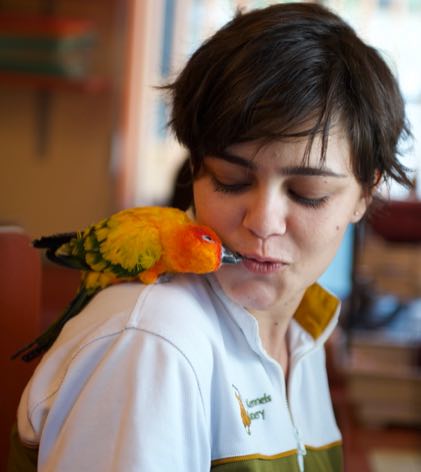
- Even if your bird will spend most (or all?) of her time outside her cage, she still needs a cage. A home. A primary place. A place that's "hers". A place where she eats and, usually, sleeps and feels safest. You can try it without a cage, but it's not a great idea. Besides, sometimes, believe me, you'll want me in the cage, not roaming around your home!
- If I'm flying all around your home, I'll be "faecal debris-ing" all around your home too! ("Pilot to bombardier. Are we in position yet?")
- If I'm not in the cage you gave me, then where am I?!! Think about it: Are doors and windows closed and secure? Are doors to forbidden rooms closed? Is the stove turned on?? Holy moly, Batman!
- Do I have somewhere (or better yet, manywhere) to perch? Will I do damage to the places I might find to perch? Do you need to make perches and place them around your home for me?
- How much of the time will I be out of my cage? Will you remember to put me in my cage when it's time for all of us to sleep or when you go out, or will I be free as a... uh... bird... all the time?
- Ideally, you need to help me by mimicking normal daylight and night-time hours in my environment: 12 hours of daylight and 12 hours of darkness (us birds need more sleep than you humans do!). And natural sunlight or full spectrum lighting with ultraviolet is necessary so that we can synthesize vitamin D, which is essentially essential for the proper regulation of calcium and phosphorus levels in our bodies. Fun, right?!
I love relationshipping. Most of my big-bird buddies, and even some small ones, really are wonderful relationshippers. (And I'm pretty good myself, if I can be so bold.) Living most of my time "free", out of a cage, is awesomeness for me and can be for you too, I'm tellin' ya. So if you're thinking fancifully of this kind of living arrangement (ask for your parents' blessing first!), know what you're getting into because it takes a lot more thinking and planning and adjustment... though I promise you, I, for one, will slip into this cageless existence rather unawares.
BATHING
If I was in the wild, I'd bathe in tree tops in the falling rain... but you can help me with a lovely spray of warm water a couple of times a week (or even more often!).
- Birds need lots of water to keep their feathers in good condition, and of course to just feel and be clean.
- Parrots love a spray of water. Watch us spread our wings and soak it all in.
- Spray might work for small birds but a shallow "bowl" of water, using either a real small bowl or a convex "bowl" of lettuce, to mimic natural vegetation which traps water for bathing, is awesomeness. Take it from me!
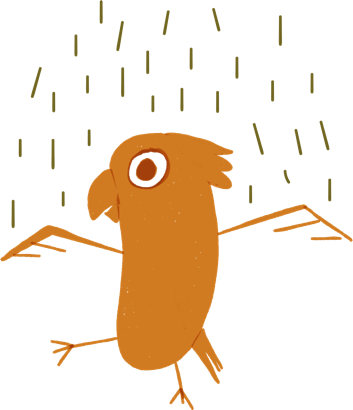
TOYS, ENTERTAINMENT and SOCIALISING
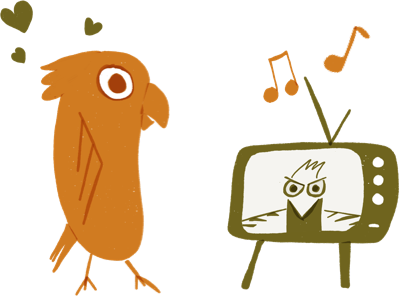
- Most of my small-bird cousins are generally not interested in toys (why? oh why??!) but can get a little kick in their lives by providing them with food in novels forms. For example, put our seeds or other types of food (veggies! fruit!) inside wooden toys, pine cones, hardwood branches, or in unexpected places in my cage or living area. Fun!
- My parrot buddies, on the other hand, are generally thought to have the mentality of a 2-3 year old human child, so you can imagine how much stimulation and interest they need and want. And so... toys, learning tricks and training, such as voice commands to step up/down onto/from your hand, toys, food in toys and other interesting places (just as for smaller birds), and... toys! Oh, and also "towel training", which means getting us used to and comfortable with being wrapped in a towel to help bind and control us (humanely of course!) so that when needed, you and our veterinarian can handle us better and more safely.

- Change our toys quite often. Keep a store of different kinds and rotate them every now and then so that I don't get bored of the very toys which are there to help me not get bored!
- We like swings!
- We're not avid fans of the latest binge-watched Netflix series, I have to admit, but hearing the television or a radio ain't such a bad thing sometimes either.
- As you lovingly and generously provision my cage with lots of toys and interesting things to do, keep in mind that some things are not so good for me: anything that I might get my claws, toes or feet caught in (such as hinged chairs, chains, some toys, etc.); anything that I might swallow (such as small ringing bells, beads, string, etc.); human mirrors (because they usually contain lead and I might find a way to chip away at it and eat bits); plastic things of any size or shape which I might be able to swallow in pieces or whole; and keep me away from plants which are toxic to me (oleander, azalea, poinsettia and philodendron ~ yes, I'm repeating myself)!
And that's it, folks!! Can you believe you've read the whole thing? Can you believe you're taking advice from a BIRD!!?
Ain't reality grand!?




